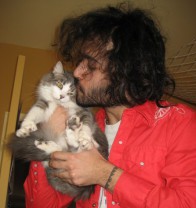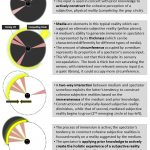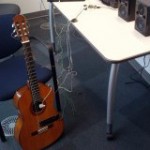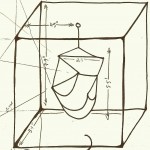
Position:
Alumnus (M.Sc.)
Contact:
kvidyart@sfu.ca
http://www.jayvidyarthi.com/
Affiliations:
SIAT, SFU, McGill University, Yu Centrik; now at http://www.interaxon.ca/
Biography
Jay Vidyarthi is simultaneously a performing musician, human-computer interaction designer and psychological researcher. His experience spans from industry to academia, where he is presently pursuing a Masters degree at the School of Interactive Arts and Technology at SFU.
Jay’s portfolio includes a unique brand of psychedelic blues music, comprehensive interface design specifications for various media, and research focused on the psychology of technology use. As diverse as it may seem, Jay’s work intersects at the concepts of ‘immersion’ and ‘expression’. Whether studying how a user and machine express to each other, designing technological mediation of expression between people, or simply expressing himself to audiences, the goal is unified: to create, understand and use new, immersive forms of human expression.
» Read about Jay at the SFU Graduate Studies blog
Projects
Cross-Disciplinary 'Immersion' Framework
Describing media as 'immersive' is ambiguous. From debilitating addiction to therapeutic relief, media engagement holds a clear duality in its effect on humanity... Without an interdisciplinary characterization of "immersion", why do we allow this concept to be so readily invoked in discussions of books, visual art, video games, virtual reality systems and more? While "immersion" into tradit...
Sympathetic Guitar
Do humans response socially to abstract, expressive human-computer interfaces? To interact with the Sympathetic Guitar is to use a familiar and comfortable Western musical interface to feel an instant connection to musical culture and style of the East. The prototype senses guitarists' hand motions and performance dynamics to augment a standard classical guitar with a digital drone...
Sonic Cradle
Sonic Cradle suspends the body is a completely dark chamber which encourages experiences comparable to mindfulness meditation. Users compose peaceful soundscapes in real-time using only their breathing. [vimeo 35764652] Introduction and demo of the Sonic Cradle Sonic Cradle is a relaxing human-computer interaction paradigm designed to foster meditative attentional patterns. The current p...


